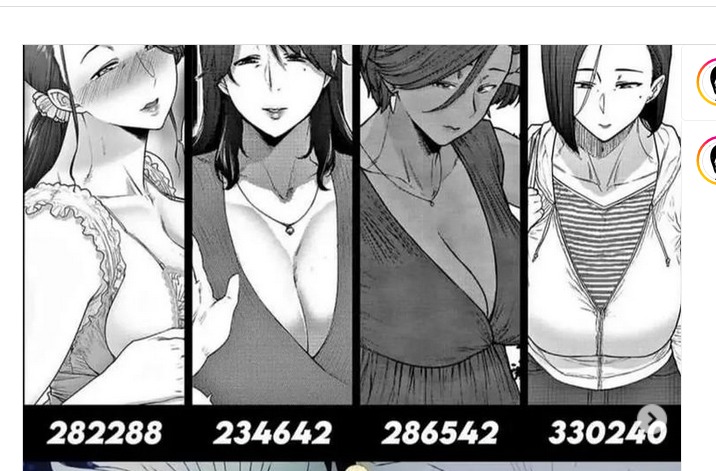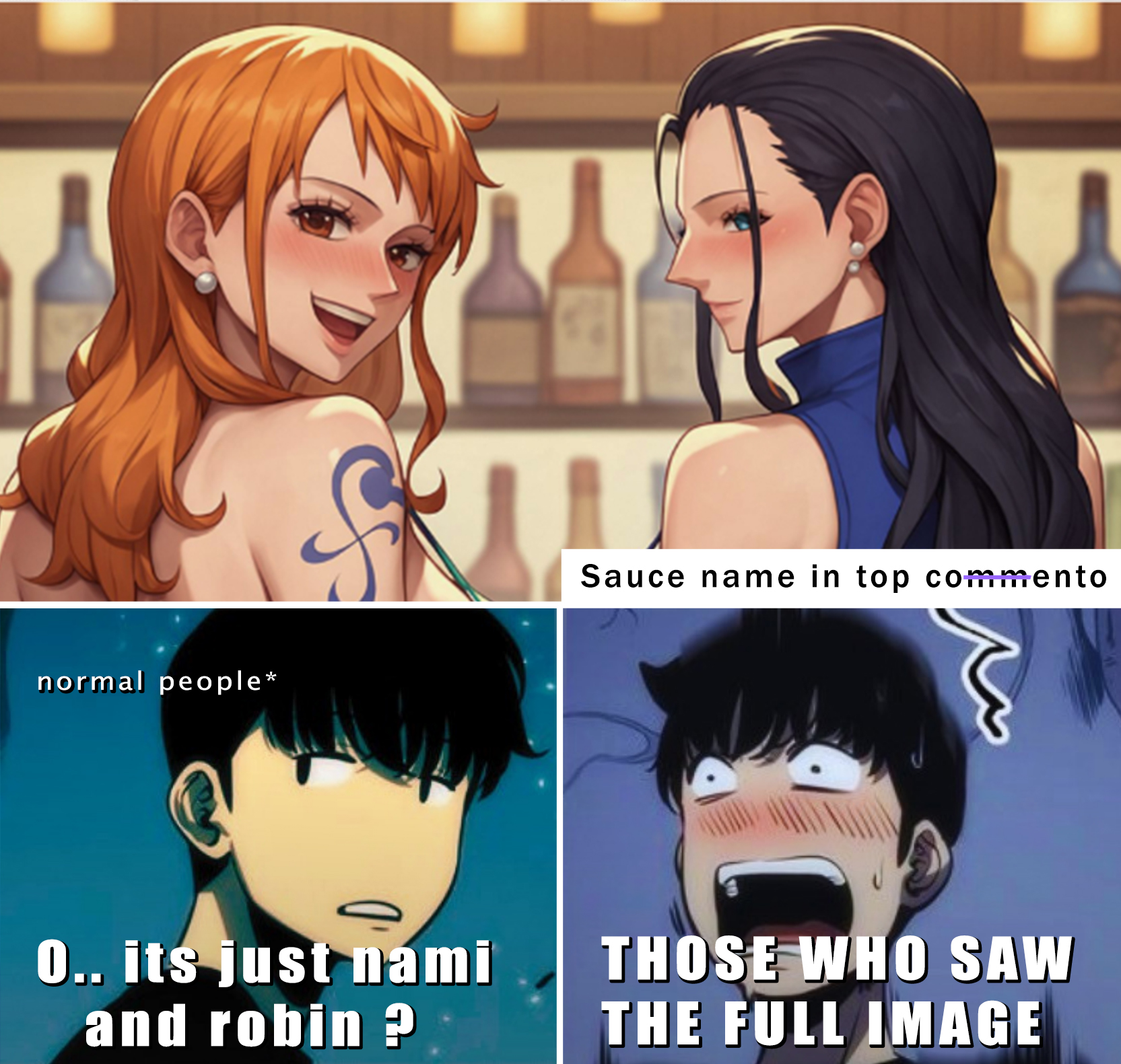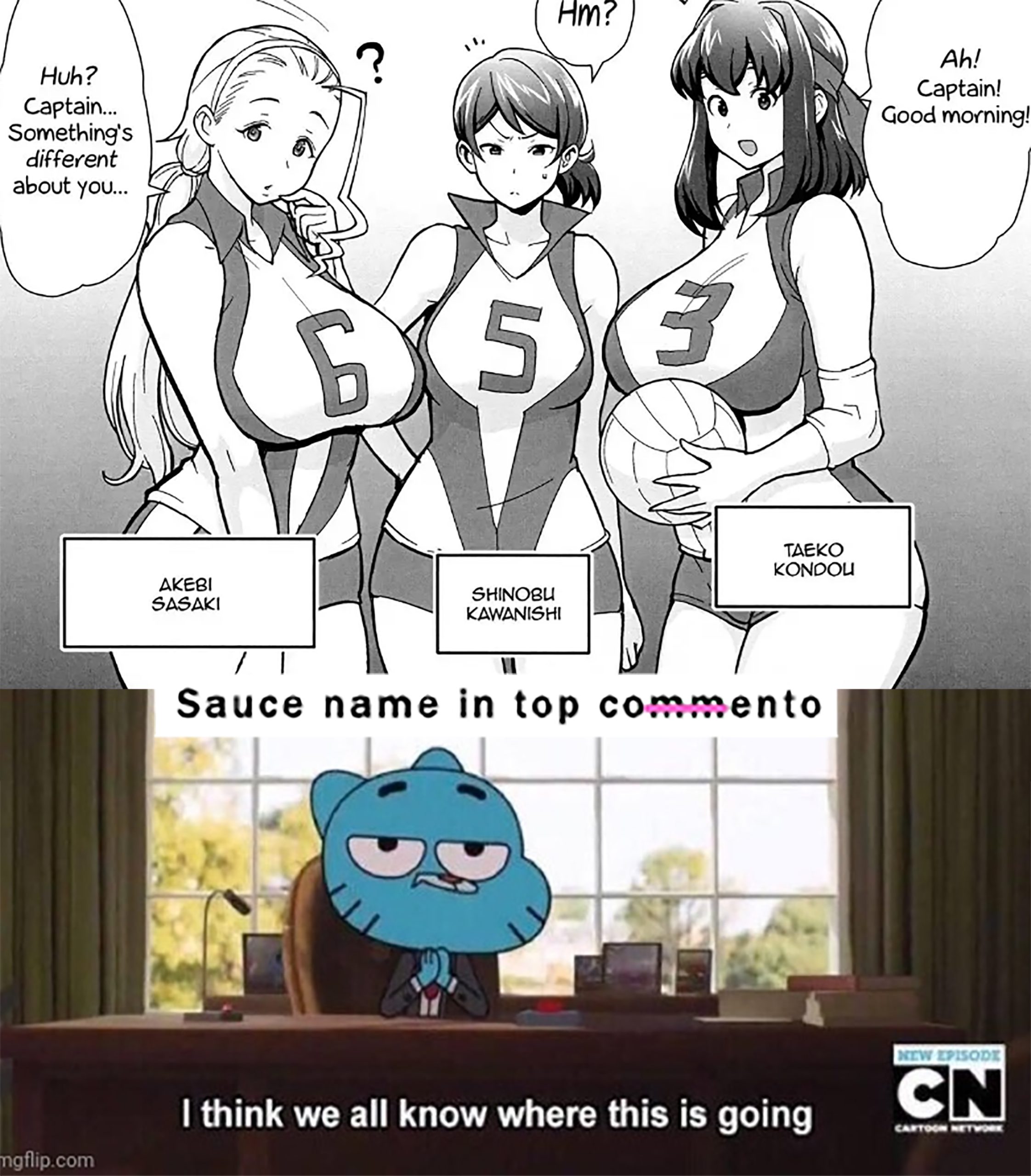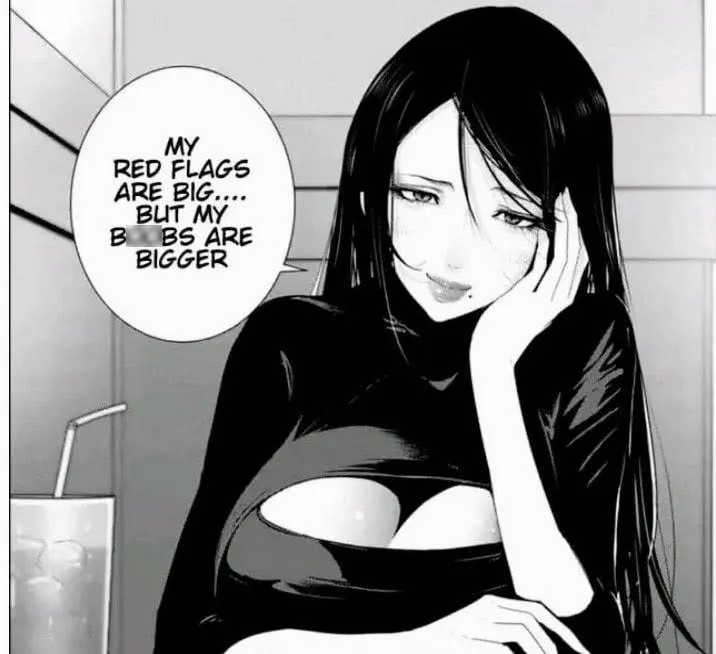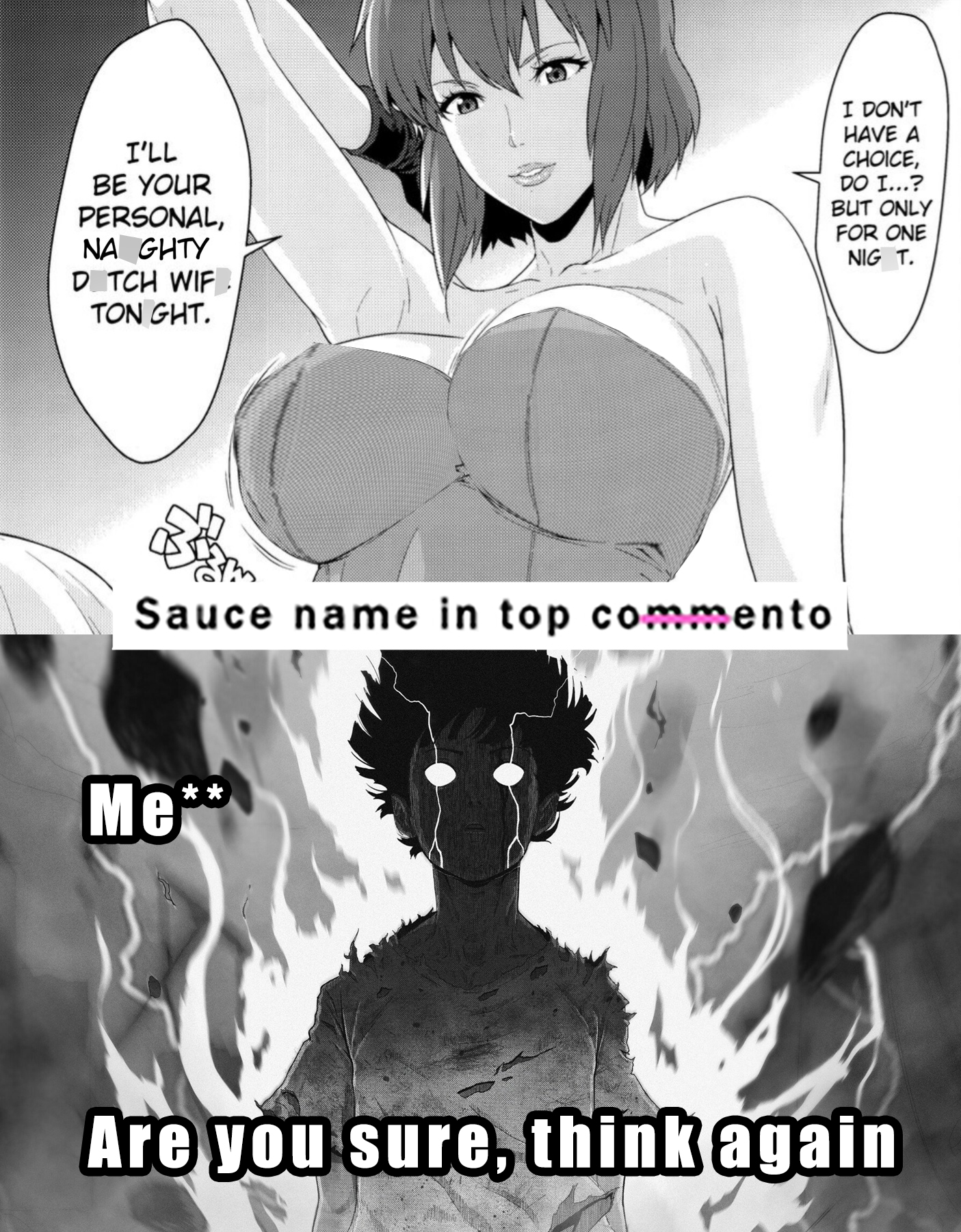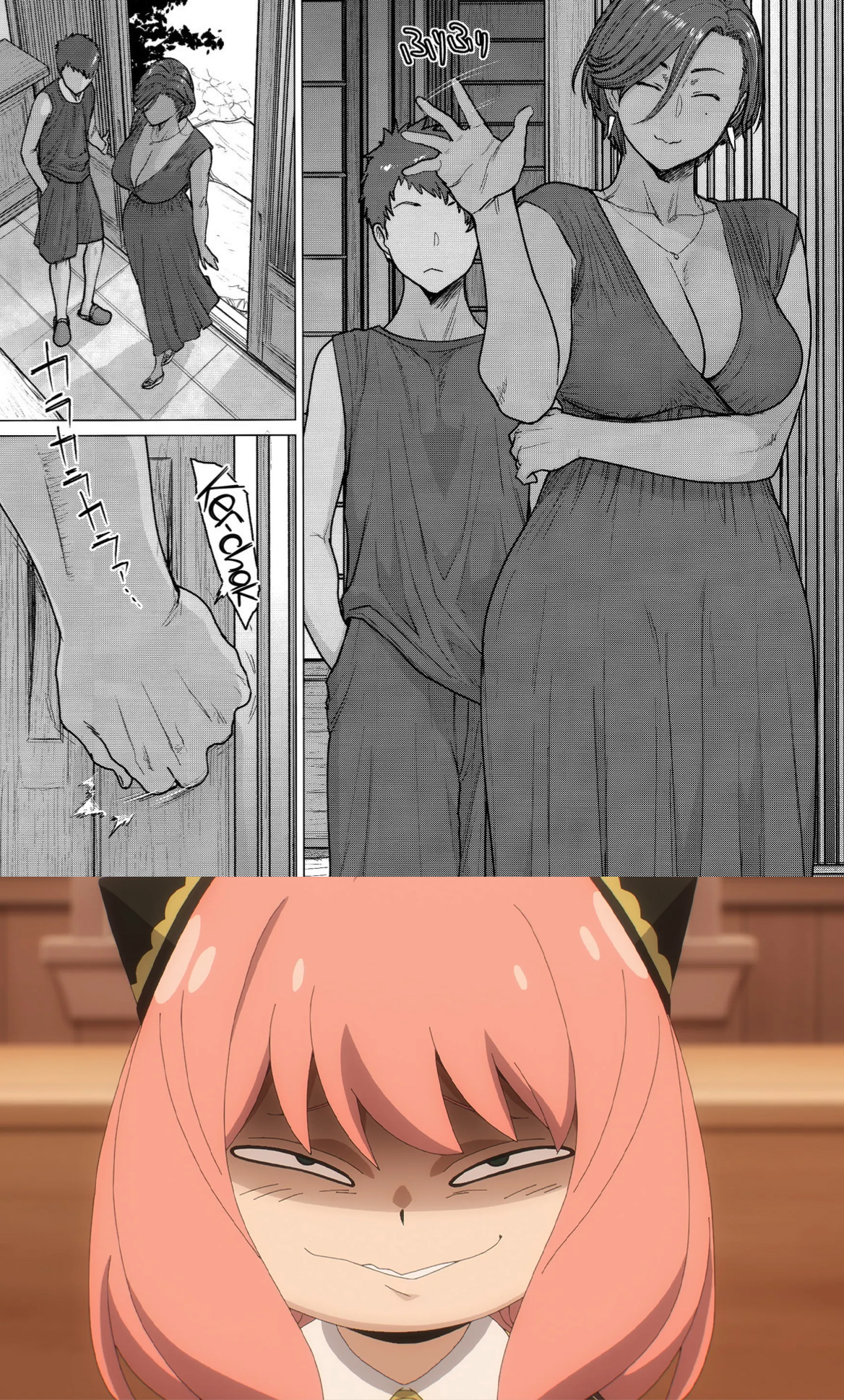Not every anime needs to stretch out for thousands of episodes like One Piece or Bleach. In fact, some of the most enjoyable stories are those that are concise and tightly woven.
Let’s explore a selection of shows that excel in being easily binge-able, whether due to their brisk pacing, cohesive storytelling, or diverse episode-to-episode experiences.
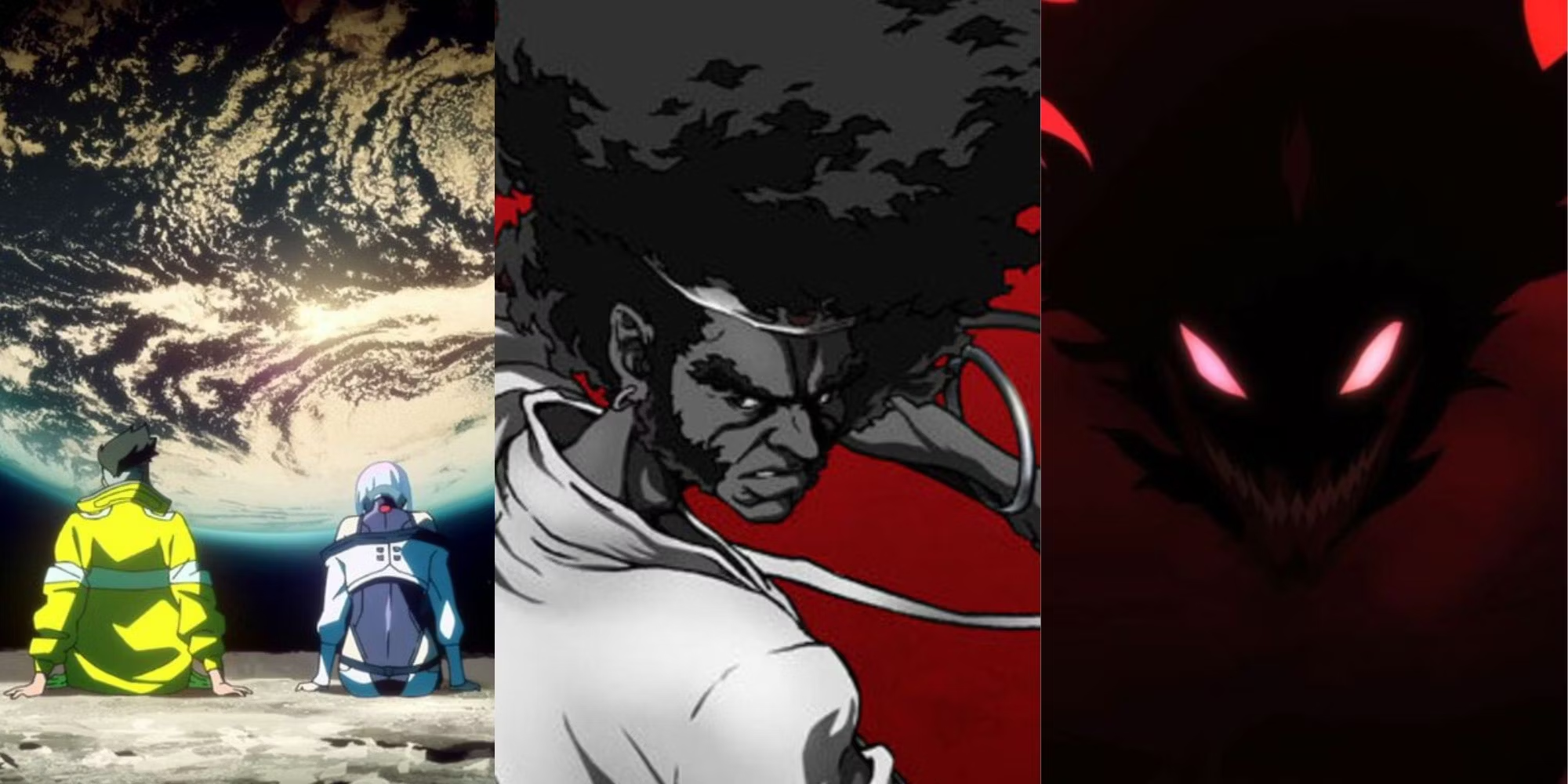
These anime, spanning one or two seasons, excite viewers with compelling plots and endearing characters. With a wide range of styles and genres to choose from, there’s something here for every anime enthusiast seeking a satisfying binge-watch.
While the Spring 2024 season currently dominates the spotlight and captures the attention of avid anime fans, those craving shorter series that can be devoured in a few hours will find the following recommendations perfectly suited to their needs.
10. FLCL
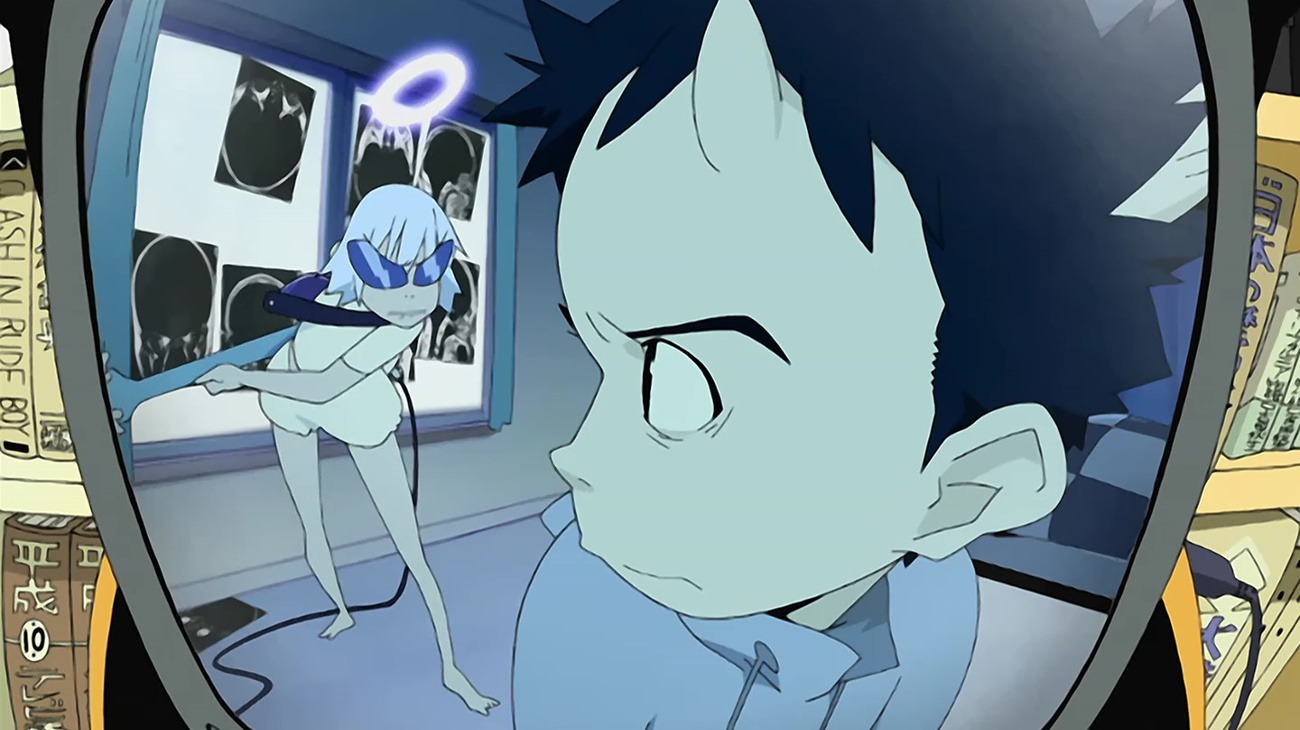
FLCL indeed stands out as a unique and frenetic anime experience, with its blend of surreal visuals, quirky characters, and rapid-fire storytelling. The original six-episode series encapsulates a whirlwind of emotions and themes, often leaving viewers simultaneously exhilarated and bewildered.
The subsequent sequels, Progressive, Alternative, Grunge, and Shoegaze, attempted to capture the spirit of the original while expanding upon its universe. However, they received mixed reactions from fans and critics alike, with many feeling that they failed to recapture the magic of the original series. Still, they offer their own distinct take on the FLCL universe and may appeal to viewers looking for more of its unique brand of storytelling.
Ultimately, FLCL remains a cult classic in the realm of anime, cherished for its avant-garde approach and unforgettable moments. Whether experiencing the original series or looking into its sequels, viewers are sure to look on a wild and unforgettable journey through the eccentric world of FLCL.
*FLCL* (pronounced “Fooly Cooly”) is a cult classic anime series that originally aired in 2000, produced by Gainax and later by Production I.G. The series is known for its surreal and chaotic storytelling, inventive animation, and unconventional narrative structure. Despite its short length of six episodes, *FLCL* remains a highly influential and beloved title in the anime community.
*FLCL* takes place in the fictional city of Mabase and follows the life of 12-year-old Naota Nandaba. His ordinary life is turned upside down when Haruko Haruhara, an energetic and unpredictable woman wielding a powerful guitar, crashes into his life—literally—by running him over with her Vespa scooter and hitting him on the head with her guitar. As a result, Naota gains the ability to summon powerful robots from his forehead.
The series is a surreal coming-of-age story that blends elements of science fiction, comedy, and psychological drama. As Naota navigates the strange events surrounding him, he grapples with his feelings of adolescence, identity, and the complexities of growing up.

*FLCL* features a small but memorable cast of characters, each with their quirks and motivations. Naota Nandaba serves as the protagonist, a seemingly stoic and reserved boy who often finds himself caught up in bizarre and chaotic situations. Haruko Haruhara, the eccentric and enigmatic woman, acts as a catalyst for Naota’s personal growth and the series’ unpredictable events.
Other characters include Naota’s family members—his father, a seemingly irresponsible but caring father figure; his grandfather, a gruff yet wise man; and Mamimi Samejima, Naota’s troubled and rebellious classmate with whom he develops a complex relationship.
*FLCL* explores themes of adolescence, rebellion, and emotional turmoil. Naota’s journey serves as a metaphor for the tumultuous nature of growing up, with the bizarre and fantastical elements of the series reflecting the inner conflicts and confusion of adolescence. The series also goes into the longing for freedom and the search for one’s true self amid societal expectations.
One of the most distinctive aspects of *FLCL* is its inventive animation and visual style. Directed by Kazuya Tsurumaki and featuring animation by some of the industry’s top talents, the series is a visual tour de force characterized by dynamic action sequences, fluid animation, and imaginative art design.
The animation seamlessly blends traditional hand-drawn techniques with experimental and surreal visuals, creating a unique and nice viewing experience.
*FLCL* is renowned for its iconic soundtrack composed by The Pillows, a Japanese rock band. The upbeat and energetic rock music perfectly complements the series’ fast-paced action and youthful energy, becoming synonymous with the *FLCL* experience.
*FLCL* received critical acclaim for its creativity, animation quality, and thematic depth. While initially confusing to some viewers due to its nonlinear storytelling and rapid pacing, the series developed a dedicated fanbase and remains a cult favorite in the anime community. Its influence can be seen in subsequent anime series that experiment with unconventional narratives and visual storytelling techniques.
FLCL is a groundbreaking and influential anime that defies traditional storytelling conventions. With its surreal narrative, inventive animation, and memorable soundtrack, the series offers a thought-provoking exploration of adolescence, identity, and the complexities of growing up. While not for everyone due to its abstract and chaotic nature, *FLCL* continues to be celebrated for its artistic vision and lasting impact on the anime medium.
9. Bunny Drop
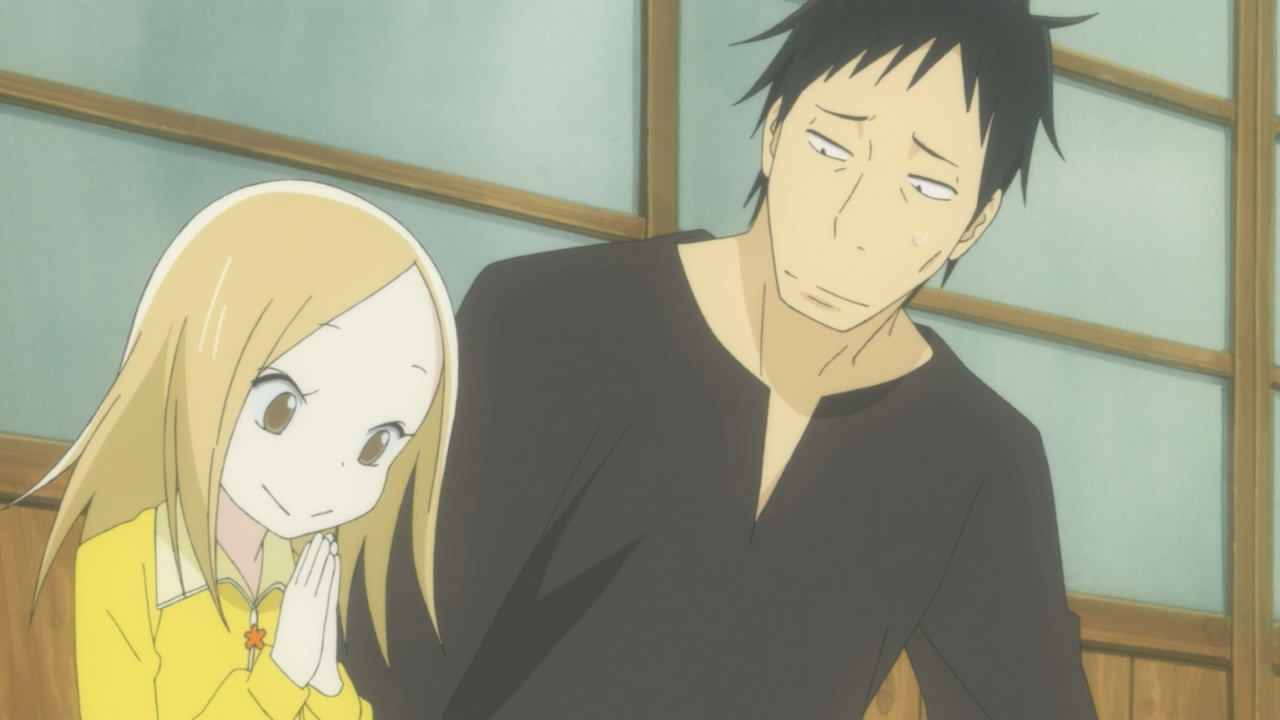
Bunny Drop is indeed a heartwarming and tender anime that explores themes of family, responsibility, and love in a refreshingly realistic manner. The story’s premise, centered around Daikichi’s decision to take in his grandfather’s illegitimate daughter, Rin, sets the stage for a touching journey of self-discovery and growth for both characters.
As Daikichi navigates the challenges of suddenly becoming a parent and adjusting to his new role, Rin also undergoes her own personal development, learning to trust and open up to her new guardian. The bond that forms between Daikichi and Rin forms the emotional core of the series, and watching their relationship evolve over the course of the show is truly heartwarming.
With its concise 11-episode run, Bunny Drop maintains a steady pace that allows for meaningful character development without feeling rushed. Each episode provides insight into the lives of Daikichi, Rin, and the people around them, creating a rich tapestry of interconnected relationships and experiences.
Bunny Drop is a poignant and uplifting slice-of-life anime that resonates with audiences through its honest portrayal of family dynamics and the joys and challenges of parenthood.

*Bunny Drop* (Japanese: *Usagi Drop*) is a heartwarming and touching anime series based on the manga by Yumi Unita. Produced by Production I.G, the anime adaptation aired in 2011 and received critical acclaim for its emotional depth, realistic portrayal of family dynamics, and endearing characters.
The story revolves around 30-year-old bachelor Daikichi Kawachi, who unexpectedly becomes the guardian of Rin Kaga, a 6-year-old girl who is revealed to be the illegitimate daughter of Daikichi’s late grandfather. Shocked by the family’s reluctance to care for Rin, Daikichi decides to take responsibility and raise her himself.
Set in contemporary Japan, *Bunny Drop* explores Daikichi and Rin’s evolving relationship as they navigate the challenges of parenthood and the complexities of family life. The series beautifully captures the everyday joys and struggles of raising a child, highlighting themes of love, sacrifice, and personal growth.
The characters of *Bunny Drop* are portrayed with depth and authenticity, making them relatable and endearing to viewers. Daikichi Kawachi is a relatable protagonist who undergoes significant personal growth as he adjusts to his new role as Rin’s guardian. He is portrayed as a caring and responsible individual, willing to sacrifice his personal comfort for Rin’s well-being.
Rin Kaga, the adorable and mature-beyond-her-years young girl, serves as the heart of the series. Her innocence, resilience, and unwavering trust in Daikichi create a heartwarming dynamic between the two characters.
The supporting cast includes family members and friends who offer different perspectives on parenthood and contribute to the series’ themes of family and community.
*Bunny Drop* explores profound themes of parenthood, family bonds, and the meaning of unconditional love. The series portrays the challenges and rewards of raising a child, highlighting the transformative impact of familial relationships on personal growth and emotional fulfillment. Daikichi’s journey as a parent reflects universal experiences of self-discovery and the importance of nurturing meaningful connections.
The animation by Production I.G is simple yet effective, emphasizing the characters’ emotions and interactions with subtle expressions and realistic movements. The art style complements the series’ slice-of-life atmosphere, capturing the warmth and intimacy of everyday life.

The soundtrack of *Bunny Drop* enhances the emotional impact of the series with gentle piano melodies and understated compositions. The music underscores key moments of introspection and bonding between characters, enriching the overall atmosphere of the anime.
*Bunny Drop* received widespread acclaim from audiences and critics for its poignant storytelling, relatable characters, and emotional depth. The series resonated with viewers of all ages, particularly those interested in slice-of-life dramas and realistic portrayals of family dynamics.
Bunny Drop is a touching and emotionally resonant anime that explores the joys and challenges of parenthood and family life. With its well-developed characters, heartfelt storytelling, and thoughtful themes, the series offers a heartwarming and relatable viewing experience.
Whether you’re a fan of slice-of-life anime or interested in heartfelt dramas, *Bunny Drop* is a must-watch that leaves a lasting impression with its touching portrayal of love and family.
8. Skull-face Bookseller Honda-san

Skull-face Bookseller Honda-san offers a delightful blend of whimsy and realism as it provides a peek into the world of a bookstore from the unique perspective of its skeleton protagonist, Honda-san. Despite the fantastical presentation of its characters, the series manages to capture the relatable struggles and challenges faced by bookstore staff with surprising accuracy.
From dealing with demanding customers to navigating the complexities of the publishing industry, Skull-face Bookseller Honda-san presents a humorous yet insightful portrayal of the daily life of bookstore employees. The show’s episodic format allows for a lighthearted exploration of various aspects of working in a bookstore, from managing inventory to interacting with eccentric customers.
What sets Skull-face Bookseller Honda-san apart is its cozy and inviting atmosphere, making it the perfect anime to binge-watch when you’re in need of a comforting escape. Whether you’re a book lover yourself or simply enjoy charming slice-of-life anime, this series offers a warm and welcoming experience that’s akin to wrapping yourself in a cozy blanket on a cold day.
Skull-face Bookseller Honda-san is a delightful and endearing anime that strikes the perfect balance between fantasy and reality, offering viewers a charming glimpse into the world of books and the people who love them.
*Skull-face Bookseller Honda-san* (Japanese: *Gaikotsu Shotenin Honda-san*) is a comedic anime series based on the manga by Honda. Produced by DLE and directed by Owl Todoroki, the anime aired in 2018 and quickly gained popularity for its humor, unique premise, and insightful depiction of the retail book industry.
The series follows Honda-san, a skeleton bookseller working at a bookstore in a bustling city. Despite his skeletal appearance, Honda-san is a dedicated and hardworking employee tasked with managing the store’s diverse clientele, which includes eccentric customers, demanding otaku, and fellow booksellers from various departments.
Set in a chaotic and fast-paced bookstore environment, *Skull-face Bookseller Honda-san* offers a humorous and relatable look at the daily challenges faced by bookstore staff, from handling unusual customer requests to navigating the intricacies of book distribution and inventory management.

The characters of *Skull-face Bookseller Honda-san* are portrayed with humor and charm, reflecting the diverse personalities encountered in the retail book industry. Honda-san himself is a likable and relatable protagonist, known for his deadpan humor and unique perspective on bookselling. His interactions with quirky customers and colleagues provide ample comedic moments and insights into the inner workings of the bookstore.
Other notable characters include Kamibukuro, a masked bookseller with a penchant for international publications; Higuchi-san, the enthusiastic and energetic manga specialist; and the mysterious Foreigner, whose language barrier leads to comedic misunderstandings.
The anime excels in humor and satire, often poking fun at the idiosyncrasies of the retail book industry and the passionate subcultures of book enthusiasts. Each episode features humorous anecdotes and observations about book genres, customer preferences, and the challenges of working in a customer-facing environment.
*Skull-face Bookseller Honda-san* cleverly incorporates elements of Japanese otaku culture, manga, and literature, appealing to viewers familiar with these subcultures while providing comedic insights for newcomers.
The animation style of *Skull-face Bookseller Honda-san* is simplistic yet effective, emphasizing exaggerated facial expressions and comedic timing to enhance the humor. The character designs, particularly Honda-san’s distinctive skeletal appearance, contribute to the anime’s comedic aesthetic.
The soundtrack of *Skull-face Bookseller Honda-san* complements the humor and chaotic atmosphere of the series with upbeat and playful music. The voice acting performances, particularly Honda-san’s deadpan delivery and the eccentricities of supporting characters, enhance the comedic dynamics of each episode.
*Skull-face Bookseller Honda-san* received positive reviews from audiences for its humor, unique premise, and engaging characters. The series resonated with viewers interested in Japanese pop culture and retail industry insights, offering an entertaining and lighthearted viewing experience.
Skull-face Bookseller Honda-san* is a delightful and entertaining anime that celebrates the quirks and challenges of working in a bookstore environment. With its humor, relatable characters, and insightful commentary on book culture, the series offers a refreshing and comedic perspective on the retail book industry.
Whether you’re a book enthusiast or simply looking for a lighthearted anime with a unique premise, *Skull-face Bookseller Honda-san* is a must-watch that delivers laughs and entertainment with its charming storytelling and humorous observations.
7. Gunbuster

Gunbuster indeed transcends the typical mecha anime tropes with its compelling story, well-developed characters, and stunning animation. While it may seem like a familiar tale of a young pilot proving themselves in the face of alien threats, the series offers much more depth and complexity than meets the eye.
One of the standout aspects of Gunbuster is its focus on character development, particularly for protagonists Noriko Takaya and Kazumi Amano. As the series progresses, viewers witness their growth and evolution, both as individuals and as comrades in arms. This adds emotional weight to the high-stakes battles they face and makes their journey all the more compelling.
Moreover, Gunbuster excels in its ability to fascinate viewers with its fantastically animated action sequences, which are both exhilarating and visually stunning. The series also benefits from a well-paced narrative that keeps viewers engaged from start to finish, culminating in a satisfying conclusion that ties up loose ends while leaving room for interpretation.
While its sequel, Diebuster, may not reach the same heights as its predecessor and is more polarizing among fans, Gunbuster stands strong on its own as a must-watch anime classic. Its loosely connected nature to Diebuster allows viewers to enjoy it as a standalone experience, making it an ideal choice for binge-watching without the need to worry about the sequel.
*Gunbuster* (Japanese: *Top o Nerae!*), also known as *Aim for the Top! Gunbuster*, is a classic anime OVA series directed by Hideaki Anno and produced by Gainax. The series originally aired from 1988 to 1989 and consists of six episodes. *Gunbuster* is celebrated for its groundbreaking animation, engaging storyline, and strong characterization, setting a benchmark for the mecha genre in the late 1980s.
The story of *Gunbuster* is set in the future where humanity is under threat from space-faring aliens known as the Space Monsters. The series follows Noriko Takaya, a young and inexperienced girl who dreams of becoming a space pilot like her father, who was lost in battle against the aliens. Noriko enrolls in a military academy and is selected to pilot the experimental mecha, the Gunbuster, under the guidance of the skilled but strict Coach Ota.
As Noriko trains and battles against the Space Monsters, she forms deep friendships with her teammates and confronts the emotional toll of war. The series also explores themes of sacrifice, determination, and the human spirit’s resilience in the face of adversity.
*Gunbuster* features compelling and well-developed characters who undergo significant growth throughout the series. Noriko Takaya is the determined protagonist who evolves from a timid recruit to a capable and courageous pilot, driven by her desire to honor her father’s legacy and protect humanity.

Noriko’s best friend and fellow pilot, Kazumi Amano, serves as a mentor figure and provides emotional support to Noriko during their battles. Coach Koichiro Ota, the strict instructor with a tragic past, plays a pivotal role in shaping Noriko’s skills and mindset as a pilot.
At its core, *Gunbuster* explores themes of heroism, sacrifice, and the impact of war on individuals and society. The series goes into the psychological and emotional struggles faced by young pilots thrust into combat, highlighting the complexities of duty and personal growth amidst a backdrop of interstellar conflict.
One of the standout features of *Gunbuster* is its groundbreaking animation, which was ahead of its time for an OVA series in the late 1980s. Directed by Hideaki Anno, the series features fluid and dynamic mecha battles, detailed character designs, and impressive special effects. The animation quality contributes significantly to the intensity and realism of the action sequences, making *Gunbuster* a visual spectacle.
The music of *Gunbuster* is composed by Kouhei Tanaka and complements the series’ dramatic tone and epic scale. The soundtrack features memorable orchestral pieces and intense battle themes that enhance the emotional impact of key moments in the series.
*Gunbuster* received critical acclaim upon its release and has since become a cult classic in the mecha genre. The series is praised for its innovative animation, compelling storyline, and memorable characters. Its influence can be seen in subsequent anime series, particularly those featuring strong female protagonists and deep thematic exploration.
Gunbuster* is a landmark anime OVA series that remains a testament to Hideaki Anno’s directorial talent and Gainax’s creativity. With its engaging characters, intense mecha battles, and thought-provoking themes, *Gunbuster* continues to grab audiences decades after its initial release.
Whether you’re a fan of mecha anime or interested in classic works that have shaped the genre, *Gunbuster* is a must-watch for its historical significance and enduring appeal.
6. Alice in Borderland
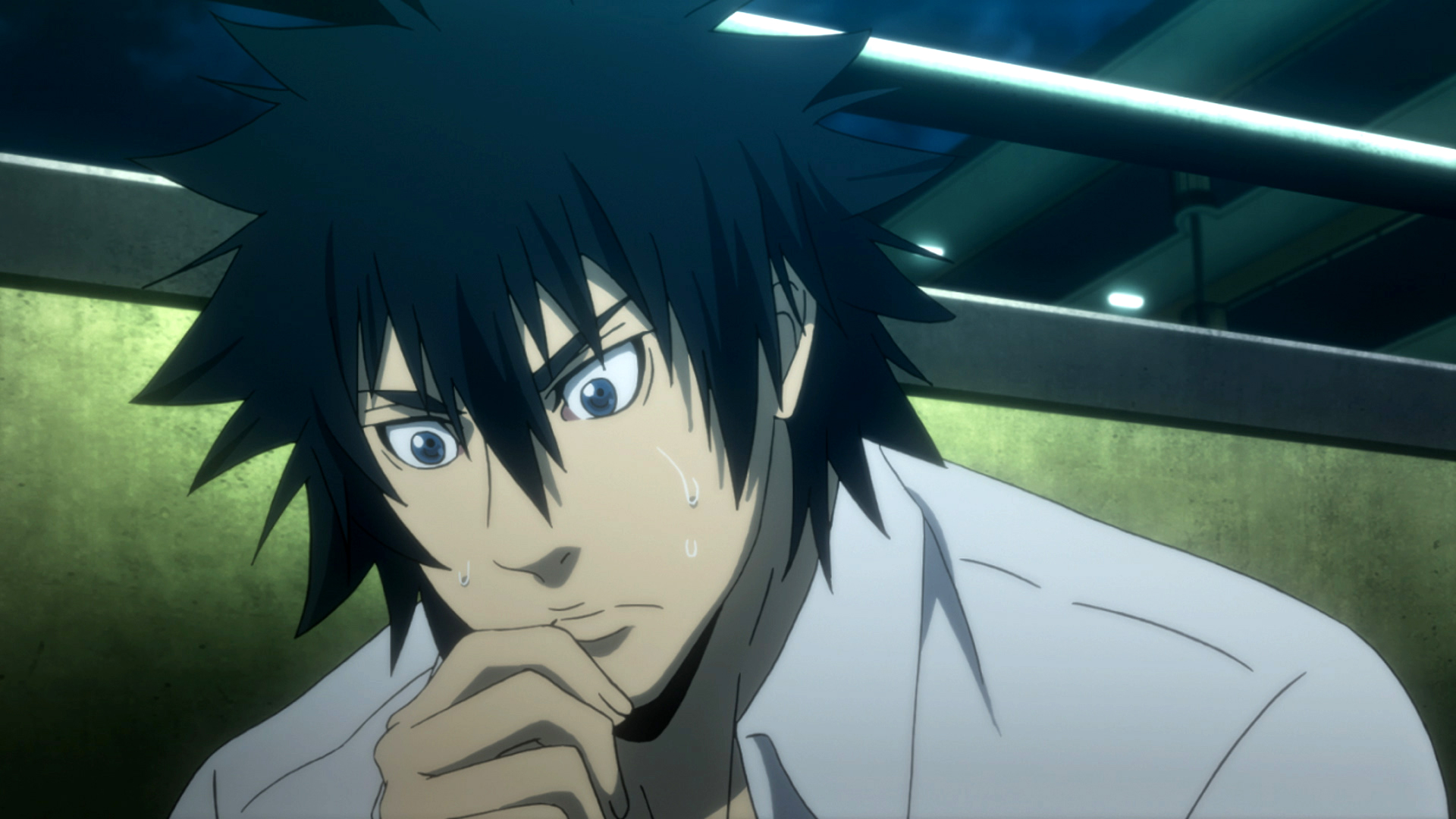
Netflix’s Alice in Borderland has indeed garnered significant attention, particularly with the success of its live-action adaptation. While the manga serves as the primary source material and offers a fascinating and immersive experience, the animated OVA series provides a condensed introduction to the universe.
With its three-part format, the anime sets up the premise of the story and introduces key characters, albeit in a more abbreviated manner compared to the manga. While it may not look deeply into character development or explore the intricacies of the plot, the animated adaptation still offers an entertaining glimpse into the world of Alice in Borderland.
Given its shorter runtime, the OVA series serves as a decent companion piece to the manga, providing fans with another way to experience the story. However, for those seeking a more comprehensive exploration of the universe and its characters, the manga and live-action adaptation may offer a more fulfilling experience.
while the animated OVA series may not stand out as a standout installment in the franchise, it nevertheless provides an enjoyable and watchable introduction to the fascinating world of Alice in Borderland.

Alice in Borderland follows the story of Ryohei Arisu (Arisu), a directionless and unemployed young man living in Tokyo. Along with his friends, Karube and Chota, Arisu finds himself transported into a mysterious and desolate version of Tokyo where time seems to stand still, and dangerous games of life and death await them.
In this eerie parallel world, Arisu and his friends must navigate various deadly challenges and games that test their wit, strategy, and survival instincts. The trio quickly learns that the key to surviving in this twisted reality is to outsmart their opponents and reveal the mysteries of Borderland, a nightmarish urban landscape governed by enigmatic rules and overseen by a mysterious figure known as the Game Master.
As Arisu goes deeper into Borderland, he encounters other survivors and forms alliances to confront the harrowing challenges that stand between them and their return to the real world.
The characters in *Alice in Borderland* are complex and multifaceted, each with their own motivations and secrets. Ryohei Arisu is portrayed as a resourceful and strategic protagonist, determined to protect his friends and reveal the mysteries of Borderland. His friends, Karube and Chota, provide valuable support and companionship throughout their journey.
Other characters, including fellow survivors and adversaries encountered in Borderland’s deadly games, add depth and tension to the narrative. Notable characters include Usagi, a mysterious and enigmatic individual with his own agenda, and Kuina, a skilled and cunning player who becomes an ally to Arisu.
The series explores themes of survival, friendship, and the human condition under extreme circumstances. *Alice in Borderland* goes into the psychological toll of being trapped in a life-threatening situation, as well as the moral dilemmas faced by characters forced to make difficult choices to ensure their survival.

The concept of identity and self-discovery is also prevalent throughout the series, as characters are challenged to confront their fears, weaknesses, and inner demons in order to navigate the dangerous world of Borderland.
=One of the strongest aspects of *Alice in Borderland* is its ability to build tension and suspense through its high-stakes games and life-or-death scenarios. Each episode is filled with thrilling challenges and unexpected twists, keeping viewers on the edge of their seats as Arisu and his allies confront increasingly dangerous opponents and obstacles.
The production values of *Alice in Borderland* are impressive, with well-executed cinematography, atmospheric set designs, and compelling visual effects that bring Borderland to life. The series effectively captures the eerie and unsettling atmosphere of the manga, immersing viewers in a dark and unpredictable world.
Upon its release on Netflix in 2020, *Alice in Borderland* received positive reviews from audiences and critics alike for its gripping storyline, strong performances, and intense suspense. The series quickly gained popularity internationally, attracting viewers with its unique premise and compelling characters.
Alice in Borderland is a must-watch live-action adaptation that successfully translates the suspenseful and thought-provoking elements of the original manga onto the screen.
With its engaging storyline, well-developed characters, and thrilling suspense, the series offers an exhilarating and immersive viewing experience for fans of survival thrillers and psychological dramas. Whether you’re familiar with the manga or discovering the world of Borderland for the first time, *Alice in Borderland* is a nice and rewarding watch that leaves a lasting impression.
5. Detroit Metal City
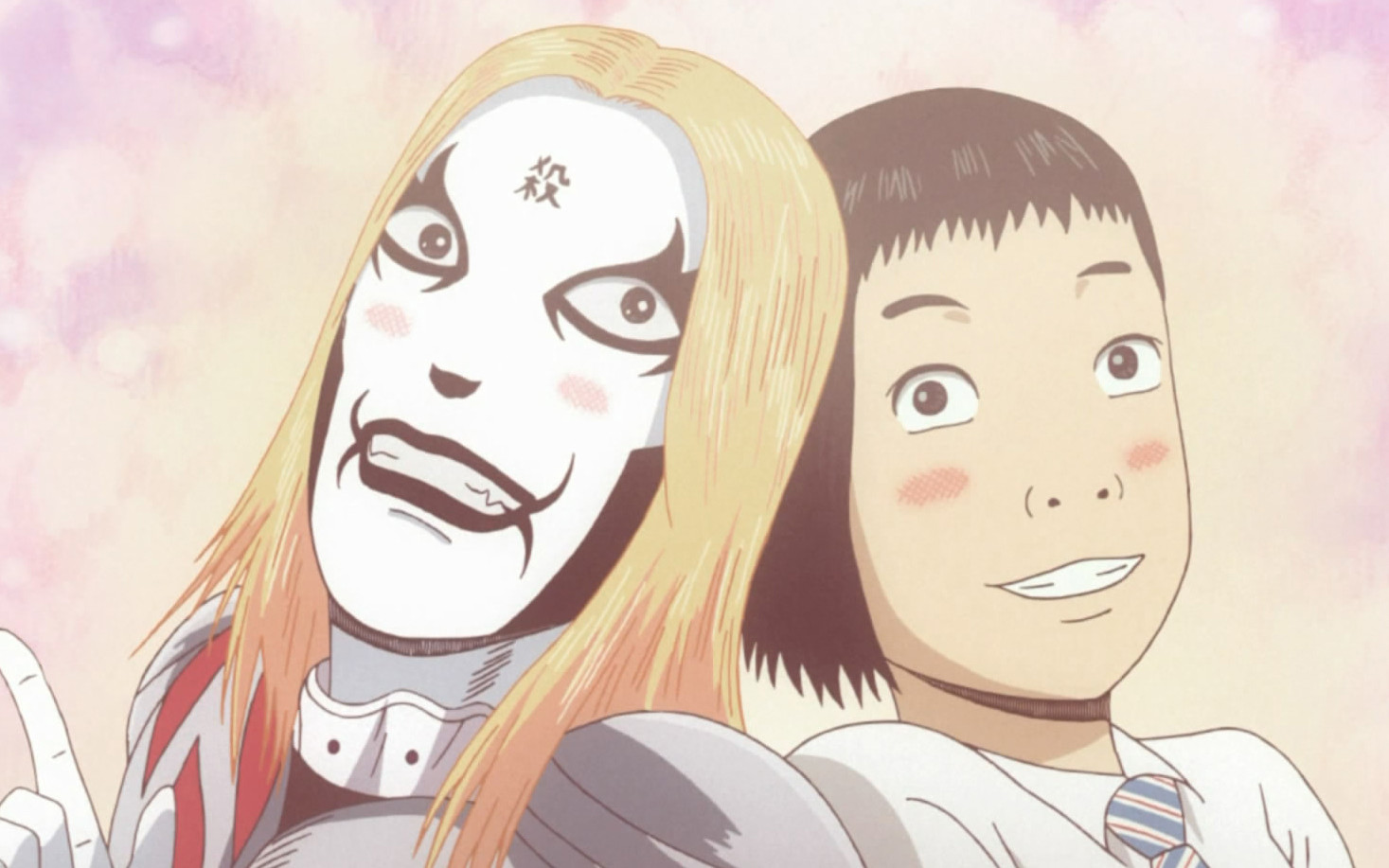
Detroit Metal City is indeed a wild and irreverent comedy that thrives on its outrageous premise and clever execution. Soichi’s struggle to reconcile his dreams of easy-listening pop with his role as the frontman of a death metal band creates a hilariously absurd contrast that drives much of the humor in the series.
The anime brilliantly capitalizes on Soichi’s dual lives, constantly putting him in situations where his personas collide with uproarious results. Whether he’s struggling to maintain his composure during a concert or desperately trying to keep his identity hidden from his fans, the comedic tension is consistently high.
While some may argue that Detroit Metal City revolves around a single joke, the series manages to extract maximum comedic mileage from this premise through its sharp writing and impeccable timing. Soichi’s transformation into the metal demon Johannes Krauser II is always a spectacle to behold, and the anime’s willingness to push the boundaries of absurdity only adds to its charm.
For fans in search of a fast-paced and irreverent comedy that doesn’t take itself too seriously, Detroit Metal City is an absolute gem. With its compact runtime, the series is perfect for a binge-watch session that’s guaranteed to leave viewers laughing out loud from start to finish.
*Detroit Metal City* (DMC) is a comedic anime series based on the manga written by Kiminori Wakasugi. The anime adaptation, produced by Studio 4°C, aired in 2008 and gained a cult following for its outrageous humor, unique premise, and satirical take on the music industry.
Detroit Metal City follows the life of Soichi Negishi, a polite and mild-mannered college student with dreams of becoming a successful pop musician and songwriter. However, Negishi’s aspirations are dashed when he becomes the lead vocalist of an underground death metal band called Detroit Metal City (DMC) under the stage name Johannes Krauser II.
Negishi’s dual life as a sensitive musician and a violent, foul-mouthed metal performer leads to hilarious and absurd situations. While struggling to maintain his wholesome persona during the day, Negishi transforms into the outrageous Krauser II at night, performing extreme and offensive songs to a devoted fan base.
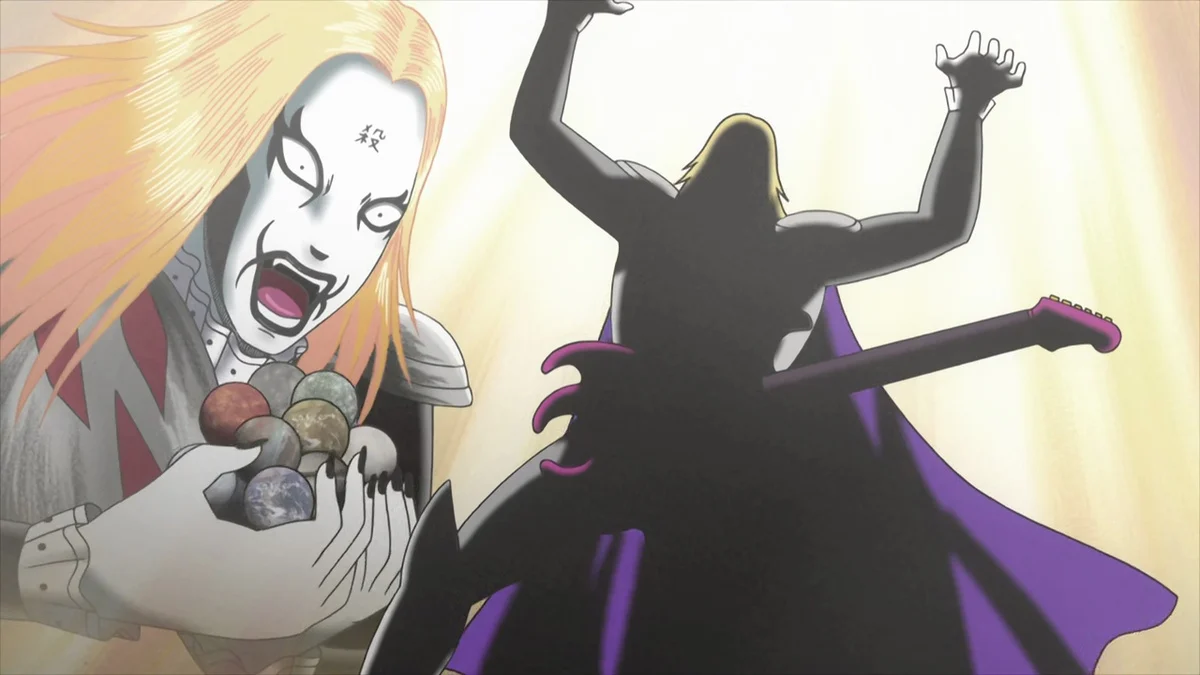
Set in Tokyo, the series explores Negishi’s attempts to reconcile his conflicting identities and navigate the chaotic world of the music industry, filled with eccentric characters and over-the-top scenarios.
The characters of *Detroit Metal City* are exaggerated and larger-than-life, adding to the series’ comedic and satirical tone. Soichi Negishi/Krauser II serves as the central protagonist, torn between his passion for gentle music and the demands of his alter ego’s hardcore persona.
Other characters include Negishi’s bandmates in DMC: the eccentric guitarist Terumichi Nishida (also known as “Terumetal”) and the drummer Masayuki Wada (also known as “Camus”). The interactions between the band members and their contrasting personalities contribute to the comedic dynamics of the series.
*Detroit Metal City* excels in dark humor and biting satire, parodying the music industry and subverting expectations of genre conventions. The series humorously critiques the commercialization of music, celebrity culture, and the extremes to which musicians go to cultivate a public image.
Krauser II’s outrageous behavior and offensive lyrics, juxtaposed with Negishi’s gentle demeanor, create absurd and laugh-out-loud moments throughout the series. The humor is irreverent and often pushes boundaries, making *Detroit Metal City* a memorable and entertaining experience.
The animation by Studio 4°C captures the exaggerated expressions and energetic performances of the characters, enhancing the comedic impact of the series. The art style reflects the gritty and edgy aesthetic of the metal subculture, with vibrant colors and dynamic visuals during concert scenes.
The soundtrack of *Detroit Metal City* features a blend of heavy metal music and catchy pop tunes, reflecting the dual nature of Negishi’s musical aspirations. The songs performed by DMC, composed by the band’s fictional guitarist, add authenticity to the series’ portrayal of the metal genre.
*Detroit Metal City* received positive reviews from audiences and critics for its originality, humor, and memorable characters. The series developed a dedicated fanbase and became a cult favorite among anime enthusiasts, particularly those interested in music-themed comedies and satirical storytelling.
Detroit Metal City* is a hilarious and irreverent anime series that offers a unique twist on the music industry and the concept of identity.
With its outrageous humor, memorable characters, and sharp satire, the series delivers a refreshing and entertaining viewing experience. Whether you’re a fan of metal music or comedy anime with a dark edge, *Detroit Metal City* is a must-watch that showcases the creativity and wit of its creators.
4. Erased

Erased is indeed a masterfully crafted thriller that fascinates viewers with its unique premise and well-executed storytelling. While the concept of going back in time to change the past is not entirely new, the series sets itself apart by placing an adult protagonist, Satoru Fujinuma, in the unfamiliar role of a child, tasked with solving a murder mystery.
The anime’s exploration of adult themes through the perspective of a child adds depth and complexity to its narrative, as Satoru grapples with issues far beyond his years while navigating the challenges of convincing others of his knowledge and credibility.
What sets Erased apart is its impeccably well-written story and compelling character dynamics, particularly between Satoru and Kayo, the girl he seeks to save. Their relationship forms the emotional core of the series, driving much of the tension and suspense as Satoru races against time to prevent tragedy.
Additionally, the series boasts an unforgettable opening song that leaves a lasting impression on viewers, further enhancing the experience.
With its gripping plot, engaging characters, and tight pacing, Erased is indeed the perfect thriller to binge-watch in a day or two, leaving viewers eagerly anticipating each twist and turn until the very end.
*Erased* (Japanese: *Boku dake ga Inai Machi*) is a nice anime series based on the manga written and illustrated by Kei Sanbe. Produced by A-1 Pictures, the anime adaptation aired in 2016 and quickly became a standout in the thriller and mystery genres for its compelling storyline, well-developed characters, and emotional depth.
The story centers around Satoru Fujinuma, a 29-year-old struggling manga artist who possesses an ability called “Revival,” which sends him back in time moments before a life-threatening incident occurs. After encountering a tragedy involving someone close to him, Satoru is sent back 18 years into the past to his childhood in 1988.
In his younger body, Satoru realizes he has been sent back to prevent a series of abductions and murders that plagued his hometown during his childhood. With the knowledge of future events, Satoru gets on a mission to uncover the truth behind the crimes and protect his friends, including a girl named Kayo Hinazuki who becomes a central figure in the case.
Set in a nostalgic and atmospheric 1980s Japan, *Erased* combines elements of suspense, drama, and psychological thriller as Satoru navigates the challenges of altering the course of history and confronting his own past.

The characters in *Erased* are complex and well-developed, contributing to the series’ emotional depth and narrative intrigue. Satoru Fujinuma is a compelling protagonist, portrayed as determined and selfless in his quest to change the future by rewriting the past. His relationships with other characters, particularly Kayo Hinazuki and his mother Sachiko, drive the emotional core of the story.
Other notable characters include Satoru’s childhood friends and classmates, each with their own struggles and motivations that become intertwined with the central mystery of the series.
*Erased* explores themes of regret, redemption, and the impact of trauma on personal growth. The series goes into the psychological consequences of unresolved childhood trauma and the resilience of the human spirit in overcoming adversity.
The theme of second chances and the power of self-discovery are central to Satoru’s journey, as he confronts his own fears and insecurities while attempting to alter the course of fate.
One of the strengths of *Erased* lies in its masterful pacing and suspenseful storytelling. The series expertly builds tension through its intricate plot twists, clever foreshadowing, and well-executed cliffhangers, keeping viewers engaged and eager to reveal the mystery alongside the protagonist.
The animation by A-1 Pictures is visually appealing, with detailed character designs, expressive facial animations, and atmospheric backgrounds that evoke the nostalgic setting of 1980s Japan. The use of lighting and color contributes to the mood and tone of the series, enhancing key emotional moments and dramatic sequences.
The soundtrack of *Erased* complements the series’ emotional depth and suspenseful atmosphere with haunting melodies and atmospheric compositions. The opening and ending themes, as well as the background music during key scenes, heighten the impact of pivotal moments in the story.
*Erased* received widespread acclaim from audiences and critics for its engaging storyline, strong character development, and emotional resonance. The series resonated with viewers for its thought-provoking themes and well-crafted narrative structure, earning it a dedicated fanbase and critical acclaim within the anime community.
Erased is a nice anime that excels in storytelling, character development, and thematic depth. With its suspenseful plot, emotional resonance, and nostalgic setting, the series offers a compelling and thought-provoking viewing experience.
Whether you’re a fan of mystery, thriller, or character-driven dramas, *Erased* is a must-watch anime that leaves a lasting impression with its poignant exploration of second chances and the complexities of human nature.
3. The Tatami Time Machine Blues

The Tatami Time Machine Blues sounds like a delightful and fascinating anime experience, especially for fans of its predecessor, The Tatami Galaxy, or those looking for a comedic and visually stunning series to enjoy in a single sitting.
The premise of the anime, revolving around a group of Kyoto University students who stumble upon a time machine amidst a sweltering summer day, promises an entertaining blend of humor, wit, and unexpected twists. The idea of using time travel to fix a broken air conditioner adds a whimsical touch to the story, setting the stage for a series of hilarious and unpredictable events.
Despite being a sequel, it’s encouraging to hear that The Tatami Time Machine Blues can be enjoyed as a standalone experience, albeit with some references or connections to its predecessor. This makes it accessible to newcomers while also offering an added layer of enjoyment for fans familiar with the original series.
With its beautiful animation and witty storytelling, The Tatami Time Machine Blues seems like a perfect candidate for a single-session binge-watch, offering a compact yet satisfying viewing experience that is sure to leave a lasting impression. As one of the best comedy anime of 2022, it’s definitely worth checking out for anyone in search of a lighthearted and entertaining escape.
*The Tatami Time Machine Blues* (Japanese: *Yojohan Shinwa Taikei*) is an anime film adaptation of the novel by Tomihiko Morimi, directed by Masaaki Yuasa and produced by Science SARU. The film was released in 2021 and received critical acclaim for its innovative storytelling, unique visual style, and thought-provoking themes.
The story revolves around Makoto Misumi, a college student who discovers a mysterious time-traveling device that allows him to revisit moments from his past. With the help of the device, Makoto attempts to change the course of events and alter his fate, particularly in relation to his romantic interest, Kyouko Ozaki.
Set in Kyoto, Japan, *The Tatami Time Machine Blues* explores themes of destiny, regret, and the consequences of meddling with time. As Makoto navigates various timelines and alternate realities, he grapples with the complexities of free will and the interconnectedness of past, present, and future.
The characters in *The Tatami Time Machine Blues* are portrayed with depth and complexity, adding emotional resonance to the narrative. Makoto Misumi is depicted as a flawed and relatable protagonist, driven by his desire to rewrite history and find happiness with Kyouko. His interactions with other characters, including his friends and fellow students, reveal layers of personality and motivation.

Kyouko Ozaki serves as a pivotal figure in Makoto’s life, embodying his hopes and aspirations for a different future. The dynamic between Makoto and Kyouko drives much of the emotional tension and thematic exploration in the film.
The film goes into profound themes of fate, nostalgia, and the search for meaning in life. Through Makoto’s time-traveling adventures, *The Tatami Time Machine Blues* explores the consequences of trying to change the past and the inevitability of certain events. The narrative invites reflection on the nature of choice and the significance of accepting one’s past while striving for a better future.
Directed by Masaaki Yuasa, known for his distinct visual style and unconventional storytelling, *The Tatami Time Machine Blues* features imaginative and vibrant animation. The film blends traditional hand-drawn animation with surreal and psychedelic sequences, creating a visually nice experience that mirrors the complexity of the narrative.
The use of color, composition, and fluid animation techniques enhances the film’s dreamlike quality and underscores the emotional depth of the characters’ journeys.
The soundtrack of *The Tatami Time Machine Blues* complements the film’s atmospheric tone and narrative pacing with evocative musical compositions. The score, composed by Michiru Oshima, captures the emotional nuances of the story, from introspective moments of reflection to dynamic scenes of time-traveling exploration.
*The Tatami Time Machine Blues* received widespread acclaim from audiences and critics alike for its inventive storytelling, artistic vision, and philosophical depth. The film resonated with viewers interested in introspective narratives and existential themes, showcasing Masaaki Yuasa’s ability to blend complex ideas with visually stunning animation.
The Tatami Time Machine Blues is a compelling and visually striking anime film that explores themes of time, destiny, and personal growth. With its innovative storytelling, rich character development, and mesmerizing animation, the film offers a thought-provoking and immersive viewing experience.
Whether you’re a fan of Masaaki Yuasa’s works or enjoy contemplative narratives, *The Tatami Time Machine Blues* is a standout film that leaves a lasting impression with its exploration of life’s complexities and the pursuit of happiness.
2. Afro Samurai
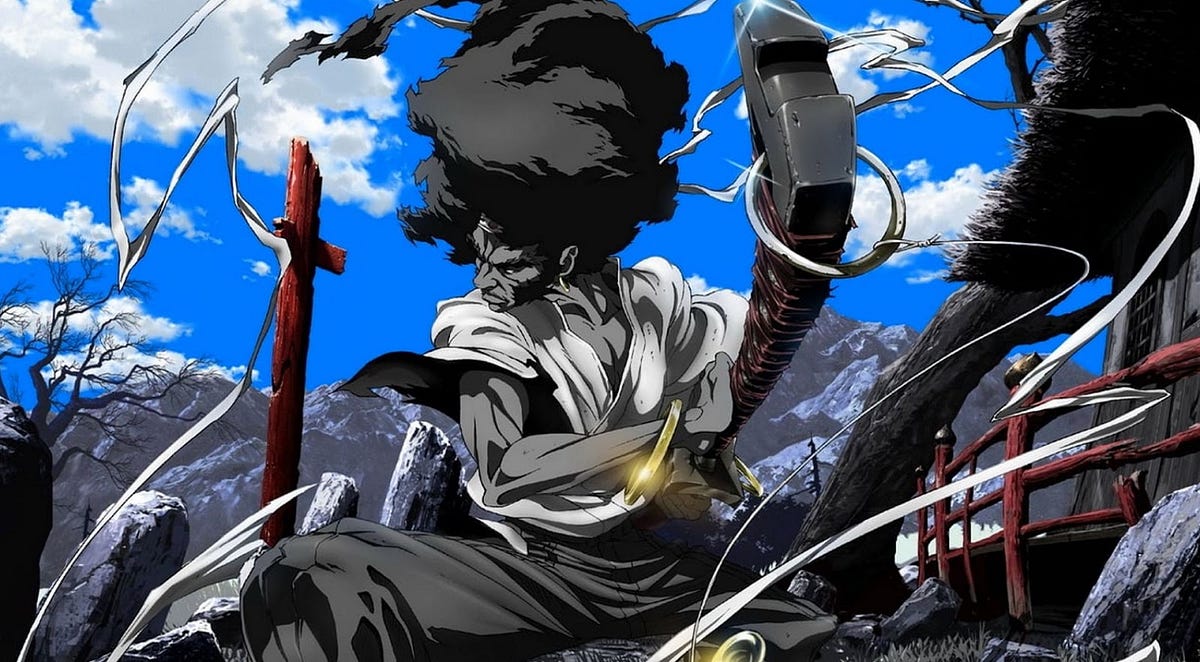
Afro Samurai indeed stands out for its stylish animation, intense action sequences, and memorable soundtrack, all of which contribute to its cult following. The series presents a unique and visually stunning interpretation of feudal Japan, where warriors are ranked by the number on their headbands, with Number 1 being the ultimate prize.
At its core, Afro Samurai is a revenge story fueled by the eponymous samurai’s quest to avenge his father’s death at the hands of Justice, the current holder of the Number 1 headband. The series excels in delivering exhilarating and gory fight scenes, showcasing Afro’s exceptional swordsmanship and the brutal nature of his battles.
While the anime may not look deeply into character development or thematic exploration, it compensates with its fun and dynamic cast of characters, each with its own motivations and quirks. Additionally, the series benefits from a stellar English voice cast, further enhancing the viewing experience.
What sets Afro Samurai apart is its unabashed embrace of its main appeal: adrenaline-pumping action and stylish animation. While it may offer glimpses of depth and introspection, particularly regarding Afro’s internal struggles and motivations, the series ultimately understands that its audience is here for the thrilling fight sequences and slick visuals.
Afro Samurai remains a must-watch for fans of action anime, offering a visually stunning and action-packed experience that leaves a lasting impression.
*Afro Samurai* is an anime series based on the manga of the same name by Takashi Okazaki. Produced by Gonzo and directed by Fuminori Kizaki, the anime originally aired in 2007 as a five-episode miniseries, followed by a television movie titled *Afro Samurai: Resurrection*. The series is known for its stylish animation, intense action sequences, and unique blend of traditional samurai elements with modern hip-hop culture.
Set in a dystopian, feudal Japan-inspired world, *Afro Samurai* follows the titular protagonist, Afro, on his quest for revenge against Justice, the man who killed his father—referred to as Afro’s Number One Headband.
In this world, the Number One Headband signifies the most powerful warrior, and anyone can challenge the wearer for the title by possessing the Number Two Headband.
Afro, who witnessed his father’s murder as a child, becomes a skilled and stoic swordsman determined to claim vengeance and obtain the Number One Headband. Throughout his journey, Afro encounters formidable opponents, treacherous allies, and supernatural challenges, all while confronting the demons of his past.

Afro Samurai is a taciturn and solitary warrior with exceptional swordsmanship skills. His quest for vengeance drives the narrative, revealing layers of complexity beneath his calm exterior. Supporting characters include Ninja Ninja, Afro’s talkative and comedic companion who serves as a foil to Afro’s stoicism, and various adversaries who challenge Afro’s resolve and combat prowess.
Notable antagonists include Justice, the enigmatic and ruthless killer who seeks ultimate power, and other formidable foes vying for the Number One Headband.
*Afro Samurai* explores themes of revenge, redemption, and the cyclical nature of violence. The series goes into Afro’s psychological journey as he grapples with the consequences of his thirst for vengeance and the toll of living as a lone warrior in a world defined by bloodshed.
Additionally, the series touches upon existential themes, questioning Afro’s identity and purpose beyond his pursuit of retribution. The narrative invites reflection on the costs of obsession and the search for inner peace amidst chaos.
One of the standout features of *Afro Samurai* is its visually striking animation and art style. The series incorporates dynamic action sequences, fluid fight choreography, and a dark, atmospheric aesthetic that complements its gritty narrative. The character designs, influenced by hip-hop culture and traditional samurai motifs, are distinct and memorable.
The soundtrack of *Afro Samurai* is composed by RZA of the Wu-Tang Clan, blending hip-hop beats with traditional Japanese instrumentation to create a unique and immersive auditory experience. The music complements the series’ urban samurai setting and contributes to its stylish presentation.
*Afro Samurai* received positive reviews from audiences and critics for its stylish animation, intense action scenes, and innovative fusion of genres. The series garnered a cult following, particularly among fans of anime, hip-hop culture, and samurai fiction.
Afro Samurai* is a visually striking and action-packed anime that merges traditional samurai storytelling with modern influences. With its compelling protagonist, stylish animation, and thematic depth, the series offers a nice and visceral viewing experience.
Whether you’re drawn to dynamic action sequences or appreciate narratives exploring themes of revenge and redemption, *Afro Samurai* stands out as a unique and influential entry in the anime genre.
1. She and Her Cat: Everything Flows

She and Her Cat: Everything Flows is a poignant and heartfelt anime that beautifully captures the bond between a young woman named Miyu and her beloved cat, Daru. Directed by the renowned Makoto Shinkai, known for his stunning visuals and emotional storytelling, this anime offers a touching exploration of love, companionship, and the passage of time.
Through its seamless blend of present-day events and flashbacks, Everything Flows looks into the small moments that have shaped Miyu and Daru’s relationship over the years. From Daru’s perspective, viewers witness the unwavering loyalty and affection he has for Miyu, even as he grapples with the realities of aging. Meanwhile, Miyu navigates the challenges of adulthood, finding solace and companionship in Daru’s comforting presence.
The anime’s ability to evoke genuine emotion and resonance is a testament to Shinkai’s masterful storytelling and the universal themes he explores. Pet owners, in particular, may find themselves deeply moved by the series’ portrayal of the bond between humans and their animal companions, with moments that are both heartwarming and bittersweet.
While She and Her Cat: Everything Flows may be a short anime, its impact is undeniable, leaving a lasting impression on viewers long after the credits roll. For those in search of a slice-of-life anime with the potential to tug at their heartstrings, this beautiful and introspective series is definitely worth a watch.
“She and Her Cat: Everything Flows” (Japanese: “Kanojo to Kanojo no Neko: Everything Flows”) is a poignant and introspective anime series based on the original work by Makoto Shinkai, who is known for his emotionally resonant storytelling and beautiful visuals.
Directed by Kazuya Sakamoto and produced by LIDENFILMS, this anime consists of four short episodes, each approximately seven minutes long. Despite its brevity, “She and Her Cat: Everything Flows” delivers a heartfelt and relatable narrative that explores themes of companionship, loneliness, and the transient nature of life.
The series revolves around the daily life of a young woman named Miyu and her pet cat, Chobi. Told primarily from the perspective of Chobi, the story follows the bond between Miyu and her cat as they navigate everyday challenges and moments of reflection. Through Chobi’s eyes, viewers witness Miyu’s struggles, aspirations, and emotional growth over the course of the four episodes.
Set in a quiet and contemplative urban environment, “She and Her Cat: Everything Flows” captures the intimate moments of Miyu’s life and the profound connection she shares with her feline companion.
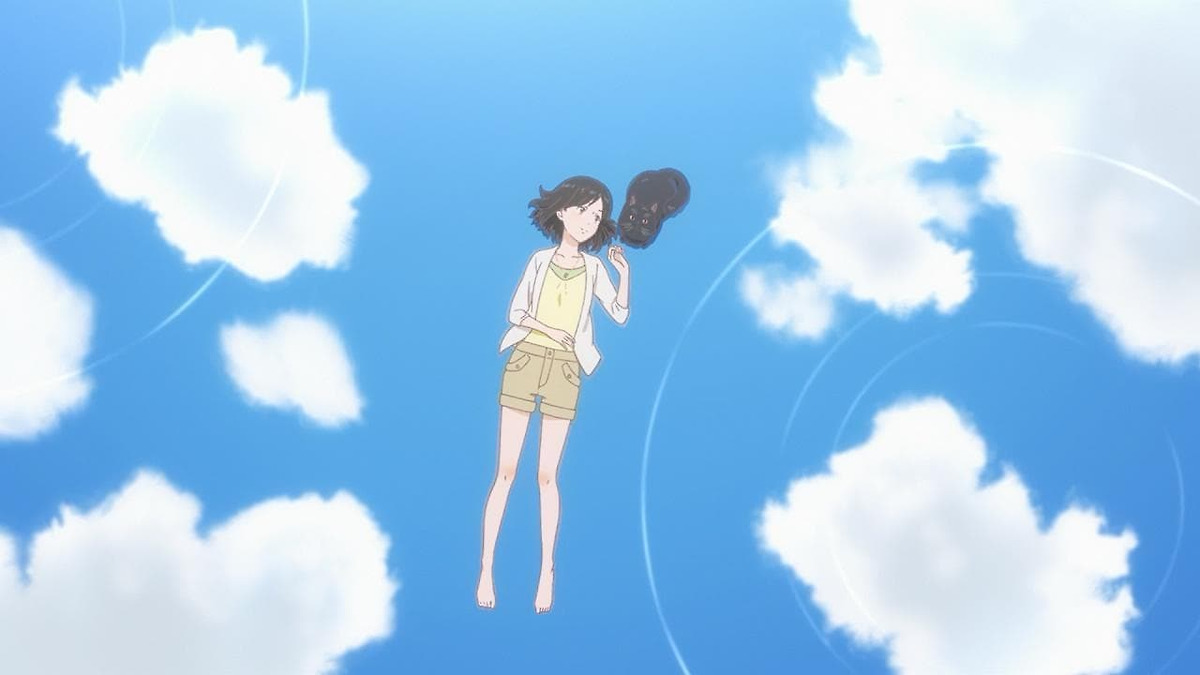
Miyu is portrayed as a sensitive and introspective young woman who experiences the ups and downs of daily life, including career aspirations, relationships, and personal challenges. Through Chobi’s observations, Miyu’s emotions and inner thoughts are conveyed with depth and authenticity.
Chobi, Miyu’s cat, serves as both narrator and silent companion, offering a unique perspective on Miyu’s experiences and providing emotional support during difficult times. The bond between Miyu and Chobi forms the emotional core of the series, highlighting the unconditional love and companionship that animals can provide.
“She and Her Cat: Everything Flows” explores themes of loneliness, connection, and the fleeting nature of existence. The series goes into Miyu’s feelings of isolation and uncertainty, juxtaposed with moments of warmth and comfort shared with Chobi. Through their interactions, the anime reflects on the significance of companionship and the profound impact of simple moments of togetherness.
The theme of impermanence is also prominent in the narrative, emphasizing the transient nature of life and the importance of cherishing fleeting moments of happiness and contentment.
The animation style of “She and Her Cat: Everything Flows” is understated yet evocative, with soft colors, fluid movements, and expressive character designs. The visuals effectively convey the emotional tone of the series, capturing the subtleties of Miyu’s emotions and the tranquil atmosphere of her daily life.
The soundtrack of the series complements the contemplative mood with gentle piano melodies and atmospheric compositions. The subdued music enhances the emotional impact of key moments, immersing viewers in the intimate and introspective atmosphere of Miyu’s world.
“She and Her Cat: Everything Flows” received positive reviews from both critics and audiences for its emotional depth, thoughtful storytelling, and relatable characters. Despite its short length, the series resonated with viewers for its ability to evoke genuine emotions and explore universal themes of love and companionship.
She and Her Cat: Everything Flows” is a beautifully crafted anime that captures the quiet beauty of everyday life and the profound bond between a young woman and her cat.
Through its intimate storytelling, evocative animation, and heartfelt themes, the series offers a touching exploration of human emotions and the enduring significance of companionship. Whether you’re an animal lover or simply appreciate heartfelt storytelling, “She and Her Cat: Everything Flows” is a gem of a series that leaves a lasting impression with its emotional resonance and heartfelt narrative.
Memes of the Day
PIXIV 116229578












